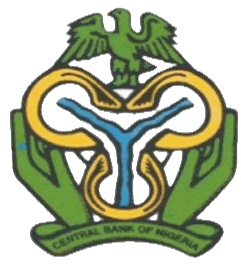Please use this identifier to cite or link to this item:
https://library.cbn.gov.ng:8443/jspui/handle/123456789/103Full metadata record
| DC Field | Value | Language |
|---|---|---|
| dc.contributor.author | Sholarin, O. | - |
| dc.date.accessioned | 2018-03-19T14:42:05Z | - |
| dc.date.available | 2018-03-19T14:42:05Z | - |
| dc.date.issued | 2007-12 | - |
| dc.identifier.citation | Sholarin, O. (2007). Asset Price Movements and Derivatives: implications for monetary policy in Nigeria. Economic and Financial Review, 45(4), 215-230. | en_US |
| dc.identifier.issn | 1957-2968 | - |
| dc.identifier.uri | http://library.cbn.gov.ng:8092/jspui/handle/123456789/103 | - |
| dc.description | Ola Sholarin works as senior analyst in structured finance with Bergstrom Capital in London where he specialises in Asset-Backed Securitisation and fixed-income derivatives. He also works as a Senior Lecturer in quantitative and financial economics at the University of Westminster in London. Prior to these, Ola has also worked as equity research analyst with Midland Investments Corporation in London. | en_US |
| dc.description.abstract | The article highlights the importance of maintaining accurate market value for a wide variety of asset classes. From the perspective of speculators, the author discusses the methodology for identifying undervalued or overvalued assets for taking appropriate bet on such assets. From analysts, hedgers or investors perspective, this paper discusses how financial instruments derivative could be used to protect financial assets and return on such assets against volatility. The author highlights application of the same set of derivative instruments for speculative, regulatory arbitrageurs and other purposes. For the same group, this paper identifies fundamental variables that determine assets' prices in a free market economy. The author specifically identifies interest rates, exchange rates, rates of inflation as well as monetary and macroeconomic policies as the main asset-price determinants. This article offers a set of mathematical models for pricing different categories of financial assets. The author maintains that financial engineering has ushered in a new set of financial assets, such as catastrophe bonds and collaterized debt obligations (CDOs), which are inherently difficult to price. At every opportunity, the author elucidates the roles of monetary policy makers in fostering efficient financial market system in an emerging economy like Nigeria. | en_US |
| dc.description.sponsorship | Central Bank of Nigeria | en_US |
| dc.language.iso | en | en_US |
| dc.publisher | Central Bank of Nigeria | en_US |
| dc.relation.ispartofseries | 45;4 | - |
| dc.subject | Asset price movements | en_US |
| dc.subject | Derivatives | en_US |
| dc.subject | Monetary policy | en_US |
| dc.subject | Financial assets | en_US |
| dc.subject | Securities | en_US |
| dc.subject | Debt instrument pricing | en_US |
| dc.title | Asset Price Movements and Derivatives: implications for monetary policy in Nigeria | en_US |
| dc.type | Article | en_US |
| Appears in Collections: | Economic and Financial Review | |
Files in This Item:
| File | Description | Size | Format | |
|---|---|---|---|---|
| EFR INNER VOLUME 45 NO 4 December 2007 MONETARY POLICY IN A CHANGING-15 Ola Sholarin Ph. D.pdf | 177.27 kB | Adobe PDF |  View/Open |
Items in DSpace are protected by copyright, with all rights reserved, unless otherwise indicated.
Admin Tools
